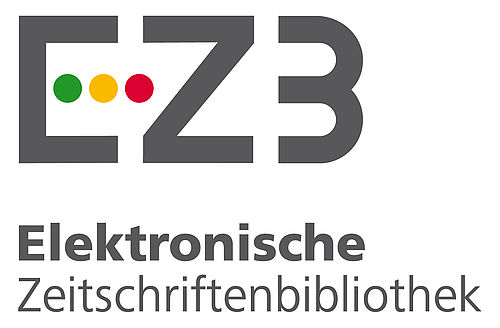Abstract
References
- 1. Abascal, K., Yarnell, E., 2005. Botanical Treatments for Hemorrhoids. Alternative and Complementary Therapies, 11(6), 285-289.
- 2. Alam, F., Islam, M.A., Gan, S.H., Khalil, M.I., 2014. Honey: a potential therapeutic agent for managing diabetic wounds. Evidence-Based Complementary Alternative Medicine, Article ID 169130. doi:10.1155/2014/169130.
- 3. Cooper, R., 2017. The use of honey in diabetic foot ulcers. The Diabetic Foot Journal 20 (3), 154 – 159.
- 4. Doupis, J., Veves, A., 2008, Classification, diagnosis, and treatment of diabetic foot ulcers. Wounds, 20, 117–126.
- 5. Eddy, J.J., Gideonsen, M.D., Mack, G.P., 2008. Practical considerations of using topical honey for neuropathic diabetic foot ulcers: a review. Wisconsin medical journal, 107(4),187-190.
- 6. Gethin, G.T., Cowman, S., Conroy, R.M., 2008. The impact of Manuka honey dressings on the surface pH of chronic wounds. International Wound Journal, 5(2), 185-194.
- 7. Imran, M., Hussain, M.B., Baig, M., 2015. A randomized, controlled clinical trial of honey-impregnated dressing for treating diabetic foot ulcer. Journal of College of Physicians and Surgeons Pakistan, 25(10), 721–725.
- 8. Kamaratos, A.V., Tzirogiannis, K.N., Iraklianou, S.A., Panoutsopoulos, G.I., Kanellos, I.E., Melidonis, A.I., 2014. Manuka honey-impregnated dressings in the treatment of neuropathic diabetic foot ulcers. International Wound Journal, 11(3), 259-263.
- 9. Mohamed, H., Abu Salma, M., Al Lenjawi, B., Abdi, S., Gouda, Z., Barakat, N., Elmahdi, H., Abraham, S., Hamza, A.H., Al Khozaei, D., Al Majid, S., Al Majid, H., Abdini, J., Al Jaber, M., Al Masseh, F., Al Ali, A.A., 2015. The Efficacy and Safety of Natural Honey on the Healing of Foot Ulcers: A Case Series. Wounds, 27(4), 103-114.
- 10. Odukoya, O.A., Ilori, O.O., Sofidiya, M.O., 2007. Astringent herbs as vasoconstrictors in haemorrhoid therapy. Planta Medica, 73, 231-231. 11. Oreščanin, V., 2016. Treatment of pressure ulcers with Bioapifit® wound healing herbal ointment - a preliminary study. IJRDO-Journal of biological science, 2(10), 1-15.
- 12. Tsang, K-K., Wai-Yung Kwong, E., Shing-Shun To, T., Wai-Yee Chung, J., Kwok-Shing Wong, T., 2017. A Pilot Randomized, Controlled Study of Nanocrystalline Silver, Manuka Honey, and Conventional Dressing in Healing Diabetic Foot Ulcer. Evidence-Based Complementary and Alternative Medicine, Article ID 5294890
Abstract
Objective/Purpose: The objective of this study was efficacy and safety assessment of
Bioapifit® wound care ointment consisted of honey, Cera flava, glycerin, the oil macerates of astringent and soothing
herbs combined with essential oils for
the treatment of diabetic neuropathic foot ulcers of grade II. Materials and methods: 50 patients with
Wagner grade II diabetic foot ulcers were randomized into experimental and
control group (25 patients each). The experimental group was treated 28 days
with Bioapifit® wound care ointment applied on the wound after cleaning with
povidone iodine once a day and covered with sterile gauze and bandage during
the whole course of the study. The control group wounds were cleaned with povidone iodine once a day
and covered with sterile gauze and bandage during the whole course of the study
without further treatment. The ulcers surface area was measured at baseline and
after 14 and 28 days of the treatment. Results:
In the end of the treatment the mean values and standard deviation of the
surface area in the experimental group dropped from 8.27±6.1 cm2 to
0.74±0.21 cm2 for males and from 9.01±5.9 cm2 to
0.81±0.11 cm2 for females. Slight, insignificant decrease was also
observed in the control population (up to 25%). No side-effects were observed
during the course of the study. Conclusion/Discussion:
Four weeks treatment with Bioapifit® wound care ointment resulted in complete
wound closure in 84% of the patients and 91% reduction in the wound surface
area in the rest of them.
References
- 1. Abascal, K., Yarnell, E., 2005. Botanical Treatments for Hemorrhoids. Alternative and Complementary Therapies, 11(6), 285-289.
- 2. Alam, F., Islam, M.A., Gan, S.H., Khalil, M.I., 2014. Honey: a potential therapeutic agent for managing diabetic wounds. Evidence-Based Complementary Alternative Medicine, Article ID 169130. doi:10.1155/2014/169130.
- 3. Cooper, R., 2017. The use of honey in diabetic foot ulcers. The Diabetic Foot Journal 20 (3), 154 – 159.
- 4. Doupis, J., Veves, A., 2008, Classification, diagnosis, and treatment of diabetic foot ulcers. Wounds, 20, 117–126.
- 5. Eddy, J.J., Gideonsen, M.D., Mack, G.P., 2008. Practical considerations of using topical honey for neuropathic diabetic foot ulcers: a review. Wisconsin medical journal, 107(4),187-190.
- 6. Gethin, G.T., Cowman, S., Conroy, R.M., 2008. The impact of Manuka honey dressings on the surface pH of chronic wounds. International Wound Journal, 5(2), 185-194.
- 7. Imran, M., Hussain, M.B., Baig, M., 2015. A randomized, controlled clinical trial of honey-impregnated dressing for treating diabetic foot ulcer. Journal of College of Physicians and Surgeons Pakistan, 25(10), 721–725.
- 8. Kamaratos, A.V., Tzirogiannis, K.N., Iraklianou, S.A., Panoutsopoulos, G.I., Kanellos, I.E., Melidonis, A.I., 2014. Manuka honey-impregnated dressings in the treatment of neuropathic diabetic foot ulcers. International Wound Journal, 11(3), 259-263.
- 9. Mohamed, H., Abu Salma, M., Al Lenjawi, B., Abdi, S., Gouda, Z., Barakat, N., Elmahdi, H., Abraham, S., Hamza, A.H., Al Khozaei, D., Al Majid, S., Al Majid, H., Abdini, J., Al Jaber, M., Al Masseh, F., Al Ali, A.A., 2015. The Efficacy and Safety of Natural Honey on the Healing of Foot Ulcers: A Case Series. Wounds, 27(4), 103-114.
- 10. Odukoya, O.A., Ilori, O.O., Sofidiya, M.O., 2007. Astringent herbs as vasoconstrictors in haemorrhoid therapy. Planta Medica, 73, 231-231. 11. Oreščanin, V., 2016. Treatment of pressure ulcers with Bioapifit® wound healing herbal ointment - a preliminary study. IJRDO-Journal of biological science, 2(10), 1-15.
- 12. Tsang, K-K., Wai-Yung Kwong, E., Shing-Shun To, T., Wai-Yee Chung, J., Kwok-Shing Wong, T., 2017. A Pilot Randomized, Controlled Study of Nanocrystalline Silver, Manuka Honey, and Conventional Dressing in Healing Diabetic Foot Ulcer. Evidence-Based Complementary and Alternative Medicine, Article ID 5294890
Details
| Primary Language | English |
|---|---|
| Journal Section | Research Articles |
| Authors | |
| Publication Date | December 26, 2019 |
| Published in Issue | Year 2019 Volume: 2 Issue: 2 |
-------------------------------------------------------------------------------------------------------------------------------













-------------------------------------------------------------------------------------------------------------------------
 CUPMAP Journal is licensed under a Creative Commons Attribution-NonCommercial-NoDerivatives 4.0 International License.
CUPMAP Journal is licensed under a Creative Commons Attribution-NonCommercial-NoDerivatives 4.0 International License.
-----------------------------------------------------------------------------------------------------------------------------------------
This is an open access journal which means that all content is freely available without charge to the user or his/her institution. Users are allowed to read, download, copy, distribute, print, search, or link to the full texts of the articles, or use them for any other lawful purpose, without asking prior permission from the publisher or the author. This is in accordance with the BOAI definition of open access.

